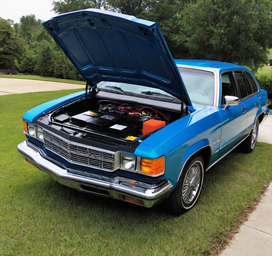
What is the difference between a standard battery and a deep-cycle battery?
Standard batteries and deep-cycle batteries serve distinct purposes due to their differing designs and capabilities. Standard batteries, also referred to as starting batteries or cranking batteries, are engineered to deliver a high burst of energy for a brief duration, typically to initiate the engine of a vehicle or other machinery. They feature thinner plates with a larger surface area, which enables them to discharge quickly and provide the necessary power for engine ignition.
Standard batteries are optimized for providing a quick burst of energy to start an engine, deep-cycle batteries are designed for sustained, deep discharges, making them suitable for applications where a steady power supply is needed over an extended period.
Standard Battery vs Deep-Cycle Battery
| Aspect | Standard Battery | Deep-Cycle Battery |
|---|---|---|
| Purpose | Provides high burst of energy for starting | Supplies consistent power over extended period |
| Design | Thinner plates with larger surface area | Thicker plates for durability in cycling |
| Discharge Rate | Designed for quick discharge | Designed for slow, steady discharge |
| Charging Capacity | Not optimized for deep cycling | Designed to handle frequent deep cycles |
| Common Voltage | 12V | 6V, 12V, 24V, 48V |
| Common AH Range | 20-50 AH | 50-400+ AH |
| Common Use | Starting vehicles, motorcycles, boats | RVs, marine vessels, renewable energy systems |
In contrast, deep-cycle batteries are specifically crafted to offer a consistent amount of power over an extended period. These batteries have thicker plates compared to standard ones, allowing them to endure frequent charging and discharging cycles without sustaining damage.
As a result, deep-cycle batteries are commonly utilized in applications where sustained or repeated discharges are required, such as recreational vehicles, marine vessels, renewable energy systems, and backup power setups. Understanding the differences between these battery types is essential for selecting the most appropriate option based on the specific demands of the intended use.
Looking for a Car Battery Jumper Starter?
Consider Using Our AMAZON© AFFILATE LINKS, as an Amazon Affiliate, we earn from qualifying purchases.
Amazon and the Amazon logo are trademarks of Amazon.com, Inc. or its affiliates
We hope you found this information helpful
Consider reading additional articles on our site
- How long does a car battery typically last?
- What affects the life of a car battery?
- Can I use any type of battery for my car?
- How To Tell What Type of Battery is in Your Car
- What causes corrosion on battery terminals?
- How to Replace a Car Battery Terminal
- How do I clean corrosion off my car battery terminals?
- What is the difference between a deep cycle and regular battery?
- How do I know when I need to replace my car battery?
- Portable Car Battery Jump Starters
- Best Portable Car Battery Jump Starter 2024 for Under $50
- Hazard Class 8 Automotive Batteries




